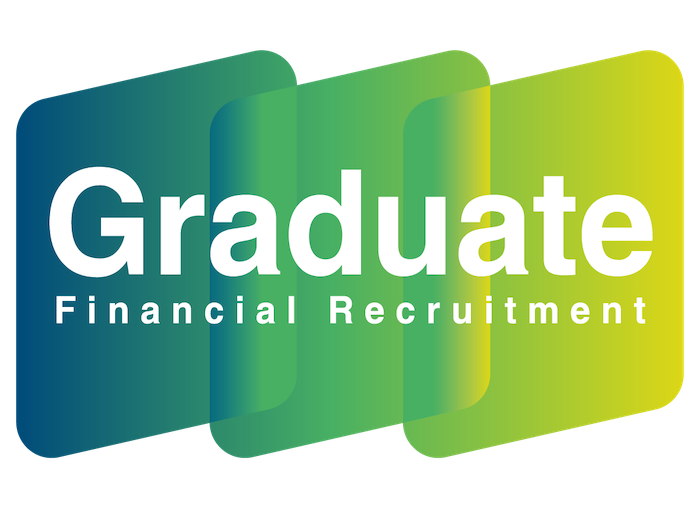To write effective networking emails, address the recipient by name and include specifics relevant to them to boost engagement. Tailored correspondence mentioning mutual acquaintances or shared backgrounds can make your message stand out. Keep your emails brief to respect the recipient’s time. Personalize the subject line and content to align with the recipient’s interests and successes. End with a clear call to action, prompting swift responses. Remember, persistence in follow-up is key to nurturing professional relationships. Improving your networking email skills can lead to meaningful connections and increased response rates.
Key Takeaways
- Address recipient by name for personalization and engagement.
- Keep emails brief and to the point to maintain interest.
- Use clear call-to-action phrases to prompt responses.
- Follow up within 24 hours to boost interaction rates.
- Utilize structured email templates for effective communication.
Essential Elements of Networking Emails
To improve the effectiveness of your networking emails, it’s crucial to incorporate key elements that enhance engagement and prompt replies. Addressing the recipient by name and including specifics relevant to them not only demonstrates respect for their time but also boosts the likelihood that they’ll open and engage with your communication. Research has shown that tailored correspondence significantly increases both open and interaction rates.
Furthermore, establishing rapport can be effectively achieved by referencing mutual acquaintances or shared backgrounds, which adds a layer of trust and increases the chances of a favourable response. Keep your messages brief; concise emails are more likely to receive timely responses.
Always conclude with a straightforward call-to-action, pointing out precisely what you’d like the recipient to do next. Implementing this strategy can enhance reply rates by as much as 65%.
For financial graduates in England, mastering these techniques is vital for building professional relationships and advancing your career.
A curious fact: The average office worker in the UK receives about 121 emails per day, underscoring the importance of making yours stand out.
Tips for Personalized Content
To boost the effectiveness of your networking emails, you should embed personalised content that strikes a chord with the recipient, showing a real interest in forging a significant bond. Here’s how you can achieve this:
Personalisation Techniques: Addressing the recipient by their name can enhance the likelihood of a response. Thorough research allows you to tailor the subject line, which can greatly increase the probability of the email being opened.
Building Connections: Align your message with the recipient’s interests and notable successes, demonstrating a real eagerness to connect. Highlighting commonalities might foster rapport and foster a sense of familiarity.
Tailored Messaging: Commend the recipient’s achievements to make your message more engaging and memorable. This bespoke approach indicates that you have dedicated time to recognize and value their accomplishments, enhancing the meaningfulness of the interaction and potentially leaving a lasting impact.
Call to Action Strategies
Incorporating a precise and direct call to action in your networking correspondence is crucial for eliciting a reply and clearly indicating the subsequent steps to the recipients. For those of you graduating from finance in England, understanding how to craft an effective email can set the foundation for successful professional relationships.
Begin your emails with action-oriented phrases such as ‘Let’s arrange a call’ or ‘I’d appreciate your insights.’ These phrases serve as a catalyst for direct interactions, thereby increasing the probability of receiving a response.
In the table below, observe how direct engagement and the creation of urgency can be implemented:
| Direct Interaction | Prompting Urgency | |—————————-|——————————–| | Employ phrases like ‘Shall we meet for coffee?’ to initiate a conversation. | Set a specific date or deadline to add a sense of immediacy. | | Invite feedback or propose a face-to-face meeting to foster interaction. | Stress the significance of a swift reply to maintain momentum. | | Detail the action you wish the recipient to take, ensuring clarity. | Outline the advantages of responding quickly to create incentive. |
Importance of Follow-Up
Strategic follow-up emails are essential tools for nurturing professional relationships and maximising networking opportunities. Here is how you can effectively use them:
- Frequency of follow-up: Persistence in follow-up is crucial. Statistics show that 80% of sales necessitate five follow-ups. If your initial emails don’t elicit a response, don’t be disheartened. Persistence, a trait often rewarded in networking, can significantly enhance your professional interactions.
- Benefits of prompt responses: Sending a follow-up email within 24 hours can increase your response rates by 65%. Timely correspondence keeps the dialogue lively and maintains interest, proving crucial in professional settings.
- Persistence and response rates: Engaging with contacts after networking gatherings can lead to a 22% increase in response rates over initial emails. Remember, 80% of sales occur between the fifth and twelfth interactions, highlighting the importance of consistent communication in fostering significant professional relationships.
For financial graduates in England, understanding the nuances of effective follow-up can set you apart in a competitive industry.
A random fact to consider: The honeybee, a tireless worker, can visit up to 100 flowers during one collection trip, exemplifying the importance and effectiveness of persistence and effort – much like in professional follow-ups.
Sample Networking Email Formats
To effectively connect with professionals, it’s essential to utilize sample email formats tailored for networking. These formats serve as a foundation for communication with industry leaders, university alumni, or potential mentors, enhancing your ability to establish meaningful connections.
One such template might be used for reaching out to a respected professional, another for following up after a networking event, a third for requesting an informational interview, and a fourth for connecting via mutual acquaintances. These structured emails should begin with a clear introduction, set forth a compelling value proposition, prompt further action, and conclude with an expression of thanks.
Employing these templates not only increases the likelihood of receiving responses but also clarifies your message, making your networking efforts more efficient and effective.
Interestingly, the first email was sent by Ray Tomlinson to himself in 1971. It was a test e-mail, and the content was entirely forgettable, but it initiated the era of modern communication.
As a finance graduate in England, leveraging such structured email formats will streamline your networking process, helping you to cultivate relationships that could be crucial for your career advancement.
Best Practices for Networking Emails
To enhance the effectiveness of your networking emails and forge meaningful connections within your professional circle, especially as a financial graduate in England, it’s crucial to adopt certain guidelines. These practices not only ensure your message stands out but also foster genuine relationships.
Personalisation: Addressing the recipient directly, such as ‘Dear [Name],’ establishes an immediate connection. Highlighting precise accomplishments or shared interests, like mentioning a recent conference both attended, demonstrates your attentiveness and genuine interest. This approach not only personalises the email but also aligns with the recipient’s experiences or achievements.
Value Proposition: Articulating the benefits you bring to the table is essential. For instance, if you offer expertise in financial analysis, mention how this can aid the recipient’s current project or goals. This strategy ensures the recipient understands the mutual benefits and potential enhancements to their professional landscape.
Call to Action: Encouraging a specific response, such as ‘Could we discuss this over coffee next week?’ provides a clear pathway for further communication. This element prompts the recipient to engage more directly and swiftly, facilitating the advancement of your professional relationship.
A fascinating fact to consider is the average office worker in the UK receives about 121 emails per day. Ensuring your email is concise, targeted, and respectful of the recipient’s time not only increases the likelihood of a response but also positions you as a considerate and professional individual.
Subject Line Strategies
Crafting compelling subject lines is essential for enhancing the efficacy of your networking emails and increasing engagement rates with recipients. To achieve optimal impact from your emails, consider these strategies:
| Strategy | Facts/Statistics | |————————|———————————————————| | Personalisation | Elevates email opening rates by 26%. | | Comparative Testing | Can boost opening rates by 49%. | | Length Optimisation | Subject lines spanning 3-4 words receive the highest opening rates. | | Utilisation of Recipient’s Name | Enhances opening rates by 22%. | | Emoji Utilisation | Enhances visual engagement and captures the recipient’s attention. |
Short subject lines often perform better; however, ensure they are sufficiently lengthy to communicate your message effectively. Employing emojis judiciously and suitably can add visual appeal and personality. Experiment with various tactics such as personalisation and comparative testing to discover the most effective methods for your audience, thus boosting engagement rates.
Random Fact: The staple food of England, fish and chips, was first served together as a dish around 1860.
Crafting Engaging Email Content
To boost the efficacy of your networking emails, ensure that each message is tailored with the recipient’s name, as this can lead to a 22% increase in open rates.
When crafting an email aimed at engaging fellow Financial Graduates from England, consider these three effective components:
Narrative Techniques: Weave in elements of storytelling—such as pertinent tales or illustrative scenarios—to capture and hold the reader’s interest. This approach not only entertains but also embeds your message within their memory.
Emotive Engagement: Forge a connection by appealing to shared feelings or experiences, demonstrating empathy, or underscoring common ground. An email that resonates emotionally is likely to elicit a more profound response.
Explicit Directive: Clearly articulate the action you wish the recipient to take. This could range from arranging a meeting, discussing potential partnerships, or soliciting feedback. A singular, well-defined directive can elevate click-through rates by 371%.
A fascinating fact: The world’s oldest piece of chewing gum is over 9,000 years old! This tidbit reminds us that even the simplest ideas can have lasting impact, much like a well-crafted email.
Frequently Asked Questions
How to Write a Professional Networking Email?
When writing a professional networking email, remember email etiquette and strategic networking. Personalize your message, articulate your value, include a clear call to action, express gratitude, and follow up politely if needed.
How Do You Write a Networking Email That Gets Results?
Want your networking emails to shine? Craft catchy subject lines that pique interest. Master follow-up strategies to stay on their radar. Personalize, provide value, and offer help. Your efforts will yield results.
How to Write an Email After a Networking Event?
To write an email after a networking event, employ effective follow-up strategies. Show gratitude, mention a memorable moment, and express interest in continuing the conversation. Embrace networking etiquette by being prompt, concise, and professional in your communication.
How Do You Write an Effective Email?
When crafting emails, remember email etiquette is key. Employing effective networking strategies can lead to fruitful connections. Personalize, articulate value, include a call to action, express gratitude, and keep it concise for impact.
Conclusion
Now that you’ve learned the essential elements of networking emails, personalized content tips, effective call to action strategies, and the importance of follow-up, you’re ready to craft successful networking emails.
Remember to always be genuine and thoughtful in your communication, and don’t forget to follow up to keep the connection strong.
By implementing these best practices and subject line strategies, you’ll be on your way to building valuable relationships and expanding your network.
Keep networking with purpose!



